Natural disasters have afflicted humanity from the dawn of time. Hurricanes, earthquakes, floods, and tsunamis lead to the deaths of around 60,000 people every year. According to the United Nations Office for Disaster Risk Reduction (UNDRR), the number of people seriously affected by these disasters has grown to 150 million, with international aid reaching billions of US dollars to assist the affected countries. Over the last two decades alone, the Emergency Events Database has recorded 7,348 natural disasters around the globe.
The top ten deadliest natural disasters recorded in the world over the last 100 years have caused the death of nearly 6 million people.
1. Yangtze River flooding, August 1931: world’s deadliest natural disaster over the last 100 years
A significant waterway on the planet, the Yangtze River is the longest river on the Asian continent. Its source is located in the Plateau of Tibet at an altitude of more than 5,000 meters.
In the period between July and August 1931, China suffered excessive rainfall which, in conjunction with the spring snowmelt in the mountains, led to floods along the Yangtze River.
According to government statistics, approximately 2 million people have died in what is regarded as the most lethal flood on record.
- The country’s central and eastern regions, particularly crowded cities such as Wuhan and Nanjing, were inundated, and those living in low-lying areas fled their homes.
- In June of that year, areas near the Yangtze registered more than 600 mm of precipitation which led to the river level rising to its highest point since records began.
- On August 25, 1931, a barrier around Lake Gaoyou was torn down and almost 180,000 sq. km – an area twice as big as Portugal – was flooded.
The floods in China in 1931 led to people from various regions experiencing starvation as a result of the strain on the land and economy, while diseases such as malaria, measles, and cholera swept across the settlements of displaced refugees.
The outcome of this disaster, according to the National Oceanic and Atmospheric Administration (NOAA):
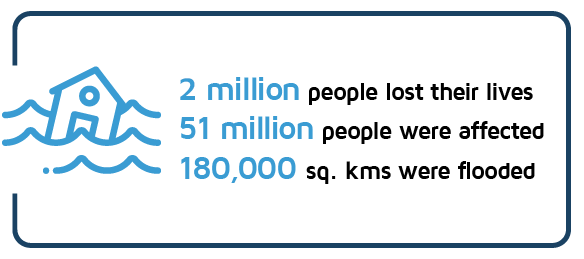
2. Tangshan earthquake, July 1976
The city of Tangshan in China, with a population of one million in 1976, suffered from an earthquake of 7.8 magnitude on the Richter scale on July 28 at 3:42 a.m. (Beijing time), according to the U.S. Geological Survey (USGS).
Located approximately 110 km east of Beijing, Tangshan is a coal-mining and industrial city that was almost completely destroyed by the earthquake. The majority of the fatalities were caused by the destruction of unreinforced masonry buildings in which people were sleeping.
The major shock occurred at 3:42 am with its epicenter being in the southern part of Tangshan, although the earthquake could be felt over 1,100 km away. Later that day, a huge aftershock with a magnitude of 7.1 struck the city of Luanxian, approximately 70 km northeast of Tangshan, which resulted in an even greater number of injuries and further damage to properties.
This natural disaster also had a massive impact on both infrastructure and agriculture, destroying roads, railway lines, dams, and wells.
- Despite the fact that officially around 240,000 people were declared dead, several sources, including Britannica, state that the actual number is much higher, between 655,000 and 700,000 people, which once again concludes that the earthquake was one of the worst natural disasters in recorded human history.
- Moreover, it was reported that around 85% of all of the buildings in Tangshan were destroyed by this disaster, and it took several years to rebuild the city.
The outcome, according to the book, “Earthquake Engineering and Hazards Reduction in China”:
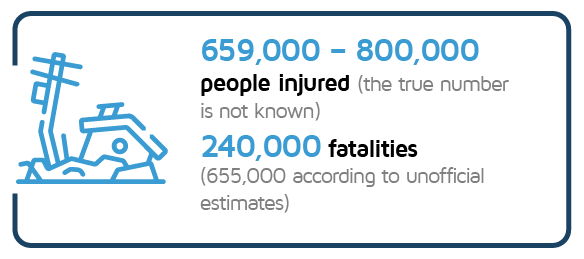
3. Bhola Cyclone, the deadliest natural disaster in Bangladesh, November 12-13, 1970
In 1970, Bangladesh (at that time known as East Pakistan) was hit by the Bhola tropical cyclone. The wind speed, based on data by NOAA’s Hurricane Research Division, reached 205 km/h, making it one of the world’s deadliest tropical cyclones to date and one of the most lethal natural disasters in the history of Bangladesh.
According to the 1971 report produced by the National Hurricane Center and the Pakistan Meteorological Department, there was a serious challenge in providing the exact numbers of the storm’s victims mainly due to the increased number of seasonal workers who had arrived in the region to harvest rice.
- Due mainly to the storm surge, the estimated death toll ranged from 300,000 to 500,000.
- The damage caused by the disaster was estimated to be US$86 million, according to NOAA’s Atlantic Oceanographic and Meteorological Laboratory.
The outcome, according to The Hurricane Research Division:
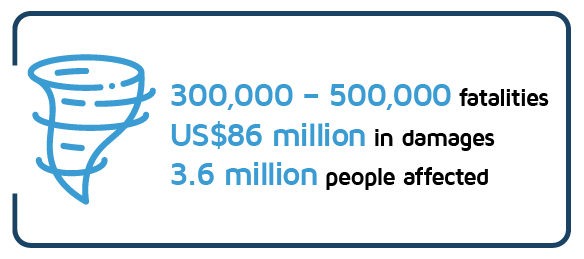
4. Haiti Earthquake, January 12, 2010
One of the deadliest earthquakes ever registered struck the small island country of Haiti in January 2010. With a magnitude of 7.0 on the Richter scale, the earthquake’s epicenter was 25 km from the capital of Port-au-Prince. The disaster left Haiti facing high levels of damage, fatalities, and casualties. The Caribbean had not seen an earthquake like this in about two centuries.
- The Caribbean had not seen an earthquake of this magnitude in about two centuries, with the number of deaths being estimated to be between 100,000 and 316,000. The Haiti earthquake was the most lethal since 1900, with around 80% of the nation’s schools and 60% of its hospitals were turned to rubble.
- In addition to a high number of fatalities, the earthquake destroyed over 97,000 houses and damaged over 188,000 buildings in the Port-au-Prince region and southern Haiti, according to the National Centers for Environmental Information.
Many of the casualties resulted from poor construction methods because, due to a shortage of certified building specialists, Haiti’s structures were not built to the required standards and thus could not withstand an earthquake of such magnitude.
The high number of casualties can also be attributed to the earthquake affecting a densely populated area with around 25% of the population residing in the Port-au-Prince region.
The outcome, according to UNICEF:
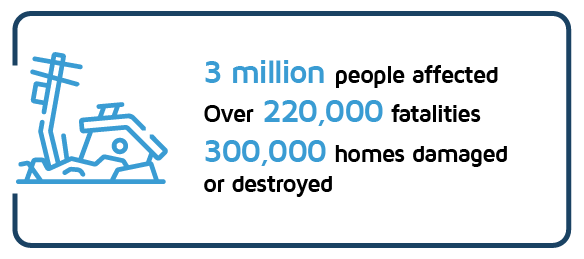
5. Indian Ocean Earthquake and Tsunami, December 26, 2004
On December 26 2004, a disastrous earthquake with a magnitude of 9.1 on the Richter scale struck just off the west coast of Sumatra in Indonesia in the Indian Ocean and provoked a massive tsunami that hit 12 countries in South Asia and East Africa, traveling at a speed of around 800 km/h and generating waves as high as 30 meters. Due to its speed, people had little time to escape the areas in danger.
Within 15 to 20 minutes after the earthquake, the first massive waves from the Indian Ocean tsunami hit Banda Aceh, an Indonesian city that was home to some 300,000 people.
The tsunami produced by the Sumatra-Andaman earthquake generated energy equal to 23,000 atomic bombs used on Hiroshima. Furthermore, by causing a shift in the planet’s mass, the 2004 Indonesian earthquake altered the Earth’s rotation.
This disaster is considered to be the third-largest earthquake since 1900, and the tsunami it caused killed more people than any other tsunami in recorded history.
- The damages brought by this natural disaster reached approximately US$10 billion.
- Indonesia was the country that suffered the most with around 167,540 people dying or missing, and damages estimated at US$4.4 billion.
- The astonishing fatality rate in Indonesia was followed by Sri Lanka with 35,322 fatalities, India with 16,269, and Thailand with 8,212.
The outcome, according to UNICEF USA:
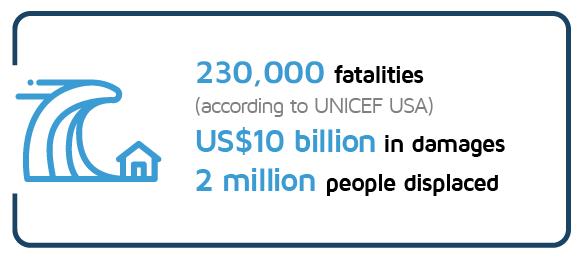
6. Typhoon Nina-Banqiao and the subsequent flood, China. August 5-9, 1975
One of the most devastating floods in history occurred in central China as a result of the heavy rains brought by Typhoon Nina that poured down over a three-day period. The typhoon was followed by the failure of the Banqiao dam on the River Ru in the western Chinese province of Henan on August 8 and the failure of 61 dams and reservoirs in other regions.
The Banqiao dam was a flood prevention and power production initiative that was intended to manage the Yellow River. With a height of 118 meters and a capacity of 492 million cubic meters of water, it aimed to be able to resist a ‘1,000-year’ flood – the flood level that is forecast to occur once in a thousand years.
However, when Typhoon Nina reached Henan, it unleashed floods twice the 1,000-year levels and in just the first 24 hours, the total precipitation exceeded 1,000 mm. On August 8, just after 1:00 am, the dam began to collapse, causing a surge of water that in some places reached heights of 10 meters and widths of 11 km, with an average speed of around 50 km/h.
- The number of people who died from flooding caused by the heavy rains reached 26,000 people, with around 10 million people being left without proper shelter.
- About 145,000 more people died due to the famine and diseases that spread after the flood.
- Over 1 million hectares of farmland were submerged by the flooding and heavy rains in 29 counties and municipalities located in the southern region of Henan province.
- The estimated financial losses in property and crops were approximately US$6.7 billion (1975).
The outcome according to the article, “Typhoon Nina and the August 1975 Flood over Central China”:
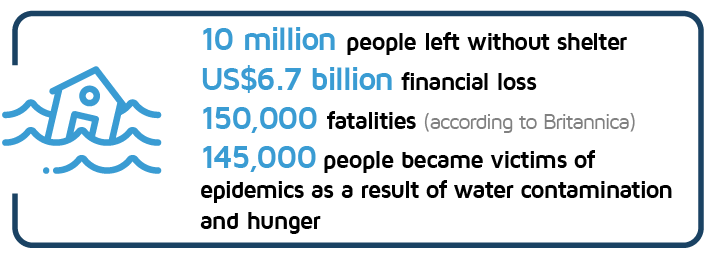
7. The Great Kanto Earthquake, Japan. September 1, 1923
This earthquake struck at 11:58 am, reaching a magnitude of 7.9 on the Richter scale and leaving the capital Tokyo and the city of Yokohama in ruins. It also produced a tsunami with waves that reached 12 meters high and caused fires to break out as a result of cooking stoves being overturned in many homes together with heavy winds. Eventually, the fires affected reached over 130 locations.
- Ten percent of the reinforced concrete constructions and over 50 percent of the brick structures in the area collapsed.
- A further 60 people were killed and 155 dwellings were destroyed in Atami on the Sagami Gulf by the 12-meter tsunami caused by the shockwave.
The outcome, according to Brown University’s Center For Digital Scholarship:
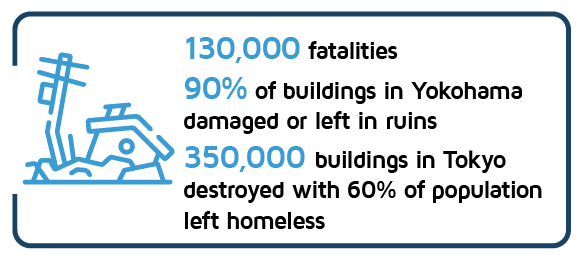
8. Bangladesh Cyclone (Marian or Gorky), April 22–30, 1991
Considered to be one of the deadliest recorded tropical cyclones in history, this struck Chittagong, one of the most densely populated regions in Bangladesh with winds reaching a speed of up to 210 km/h. Due to a shortage of potable water and a lack of sanitation, the prevalence of diarrhea and dysentery rocketed with as many as 2,000 deaths reported in the first three weeks after the cyclone had hit.
- There was a devastating loss of life because many people either missed the warning information or failed to think it was serious.
- After forming in the Indian Ocean, the cyclone made landfall close to Chittagong, affecting over 13.4 million people nationwide.
- The disaster destroyed more than 79,000 buildings, affecting not just the infrastructure and homes, but also the country’s agricultural sector.
The outcome, according to USAID:
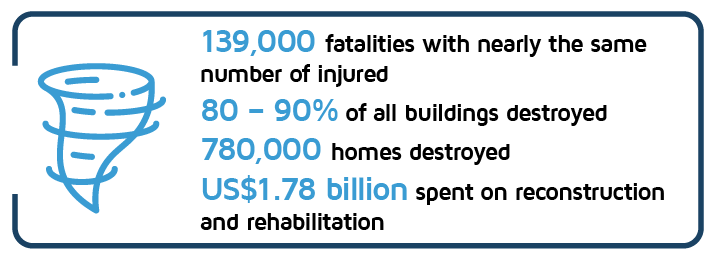
Despite the fact that the cyclone had no official name, documentation from the USAID and the US Army referred to it as Cyclone Marian while Time magazine dubbed it Cyclone Gorky.
9. Cyclone Nargis, Myanmar. May 2-3, 2008
This category 3 cyclone had a serious impact on Myanmar including its largest city Yangon and was also responsible for landfall in the Ayeyarwady Division. The ecology of the Ayeyarwady and Yangon Divisions, regions where local livelihoods are strongly dependent on natural resources, was devastated by Cyclone Nargis.
- The cyclone had an enormous effect on more than 50 townships, according to the United Nations.
- It affected around 2.4 million people. Over 140,000 people lost their lives, mostly as a result of the storm surge.
The outcome according to the United Nations Environment Programme (UNEP):
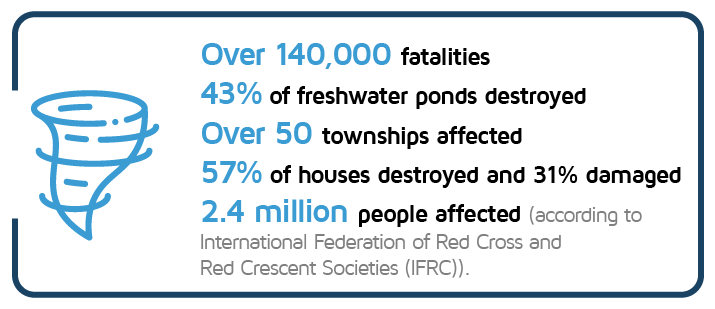
10. Kashmir Earthquake, Pakistan, India, Afghanistan. October 8, 2005
This disastrous earthquake struck at 8:50 am (local time) with a registered magnitude of 7.6 points on the Richter scale. The most affected regions were Kashmir and the North-West Frontier Province (called Khyber Pakhtunkhwa after 2010) in Pakistan and nearby regions in India and Afghanistan.
- Over 87,000 people died, around 38,000 were injured, and more than 3.5 million lost their homes.
- Around 250,000 farm animals perished as a result of stone barn collapses, while over 500,000 large animals needed emergency shelter from the severe winter.
The outcome, according to the Earthquake Engineering Research Institute (EERI):
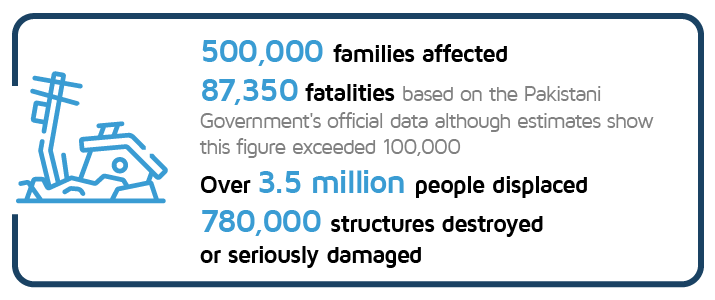
Climate change exacerbates the risk of natural disasters and increases the danger of catastrophic weather events. Due to increased temperatures in the atmosphere and hydrosphere around the globe, experts are registering continuously rising sea levels, increasing wind speeds, increased rainfall, and flooding.
See also: Economic impact of natural disasters in 2020
At the same time, figures regarding fatalities in the early to mid-20th century were much higher compared to the death toll in recent decades. Improvements in living standards, the construction of resilient infrastructure, and effective response tools have all contributed to this progress. These trends have been fueled by an increase in earnings around the world, but there is still much to be done to eliminate poverty and tackle climate change.

